
It’s Veterans Day in the US, Remembrance Day in Canada, and Armistice Day in the UK where we reflect and honor military veterans and those who served our countries in the past. Thank you for your service!
In this same spirit of reflection, I was thinking about a very compelling book I’ve been reading called Beyond the Valley: How Innovators around the World are Overcoming Inequality and Creating the Technologies of Tomorrow by UCLA professor Dr. Ramesh Srinivasan. He’s studied, written about, and traveled the world looking into technology and its impact and the disconnect between users and designers, producers and consumers, and technology elites and the rest of us.
A world of promise and bias
Srinivasan’s research across Africa and Latin America looks at technology and its effect on the poor, the underserved, small communities, and the surprising hackers and innovators in these developing countries.
What he finds is a world of problems, a world of built-in technology bias, and yet optimism for the unheralded gals and guys finding ways to innovate and extract the good things from technology for their local communities.
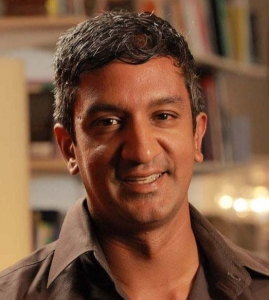
“All of our assumptions around what technology is, can be, or should be, were completely challenged by the fieldwork I did for this book. I saw people with almost no money at all, creating sustainable technology businesses using recycled parts and fabricating devices for pennies on the dollar. I saw people take technologies that were created with one particular purpose in mind and transforming it into something altogether different. Technology is often a skewed mirror of its creator, right now we inhabit a very strange moment are just a few people have managed to create technologies of all forms that are used by 99.99% of the population. That’s why it’s important to open up the blueprint – the “black box of technology” – and realize that technology can serve us all, regardless of who or where we are, but only if people are able to take power over its use, and at times even its design,” Srinivasan says.
Throughout his book, he highlights examples of bias built into technology, software, and even artificial intelligence, partly because most of these technologies are created by white male designers and engineers in Silicon Valley or the industrial-technology complex growing in China. Fortunately, it doesn’t have to be that way.
There are countless examples of bias not always intended, but nevertheless a reality such as facial recognition that doesn’t recognize black or brown faces or women. Built-in gender bias against female applicants for loans and credit. Or the planned obsolescence built into many high-end products with dozens of features beyond what the average person needs and never uses.
Then there are countless examples of what happens when you overlay systems and products designed far away onto poor, small communities. Usually, the costs are much higher than the benefits for indigenous or local communities.

Big data presents more technology, moral, and ethical dilemmas. Do we think carefully about the personal information we give up in order to use technology, benefit from financial services in the cloud, or the latest shiny new app? Who controls our personal data? Who benefits and do users have a chance to control the use of their personal information?
All very thorny challenges for the financial services industry, for fintechs developing the newest shiny digital money app, or algorithms guiding everything from credit card applications and credit scores to loans, insurance, and even debt collections online.
Srinivasan says, “No matter who we are, whether we are actually “indigenous” or not, we are being seduced and – at times – forced to embrace the tools of corporate technology. There are a few select people who were making massively important decisions about our digital future. For us, we are all indigenous people in the sense that we are the people who experience the world in our realities in a very local way. But these tools and systems that we interact with, using collective exploiter data, are far removed from our lives and our needs.”
Srinivasan argues technology doesn’t have to be elitist or biased, but it does have to be more transparent, more inclusive, more thoughtful in its design and user experience, and more able to adapt to local needs and conditions.
M-PESA – an African payments success story
Srinivasan takes a look at M-PESA, an African mobile phone-based money transfer, finance and microfinancing service launched in 2007 by Vodafone for Safaricom and Vodacom, the largest mobile network operators in Kenya and Tanzania.
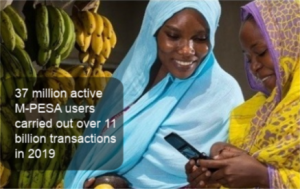
M-PESA has since expanded into South Africa, Afghanistan, India, Romania and Albania and now has more than 37 million active users and more than 400,000 registered representatives that make digital banking possible where there are no bank branches.
“M-PESA, which developed because a great portion of the African population had no easy, reliable method to exchange money with one another, allows its users to pay for goods and services via credits went to their mobile phone accounts. It operates from almost anywhere through a network of agents such as sugarcane merchants, small food stands and other local businesses. The concept has proven to be a great deal for users and the full mobile phone providers alike with at least 100 million active mobile money accounts across numerous African countries, the telecoms are making far more by charging users less for these transaction fees than the banks,” Srinivasan reports.
M-PESA lets users store, receive, and send money safely using a basic smartphone. Purchases can be made at many merchants using a QR code on a mobile phone. Businesses of all sizes can use the service to take customer payments, pay salaries to employees anywhere in the country, and even make stock purchases with SMS notifications of every transaction for records keeping.
Local governments also use M-PESA to collect taxes and send social security and other payments. All for pennies on the transactional dollar compared to the much higher prices we pay for similar mobile services in our “developed” countries.
Mobile mobile everywhere
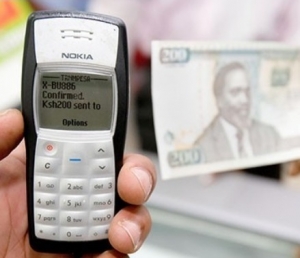
Mobile is everywhere in developing countries that have leapfrogged over legacy telecoms and infrastructure to mobile, local services even in small, remote communities. As many as six billion of the seven billion people on earth now have access to mobile phones.
Srinivasan recounts how communities as disparate as Red Hook in New York, Villa Taleo de Castro in Mexico, and many small African communities have developed Wi-Fi services to meet local needs. By hacking, recycling, rebuilding, scrambling and innovating, these communities have created local networks that put local residents in touch with each other.
To do so, they’ve sometimes bucked governments, multinational telecoms, and country IP providers to build tiny connected communities. But in some cases, despite the fact their local mobile and internet services cost pennies, once established, larger business interests swooped in to try and install and impose services at much higher costs. Part of it is a community’s desire to be “more modern” or simply yielding to promises, better branding and bait and switch tactics by big companies once the market was established.
Economic, gender and cultural bias beware
Srinivasan’s book is a thoughtful reminder of some of the limitations and biases of technology that we may not recognize in our eagerness to access the benefits of technology.
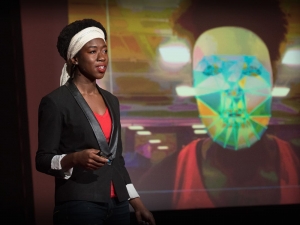
He recounts the surprise and frustration of computer scientist Joy Buolamwini, a Ghanaian American woman and graduate of MIT technology who discovered in an art/science project that the facial recognition software she was using didn’t “recognize” her black skin. She was forced to wear a white mask to get the camera to recognize her and has since written and spoken out about gender bias in technology and algorithms. You can see her TED Talk here.
Just recently, mainstream US media reported on gender discrimination in financial services which will come as no surprise to most of us in the industry. Recent applications for credit for the new Goldman Sachs/Apple credit card – one of the most successful financial product launches ever – have raised claims of gender discrimination by its algorithms.
ABC News reports New York Department of Financial Services investigators are looking into potential gender discrimination by Goldman Sachs in its handling of credit applications:
“The investigation follows a series of viral tweets by entrepreneur and web developer David Heinemeier Hansson about algorithms used for the Apple Card, which Goldman Sachs manages in partnership with Apple.
Hansson said the card offered him a credit limit 20 times greater than it gave to his wife, even though she has a higher credit score. He called the algorithm a sexist program.”
Woz says algos have flaws
Apple co-founder Steve Wozniak also jumped into the debate and online conversations by saying that he and his wife experienced a similar situation where he received 10 times the credit limit despite shared accounts and credit history.
Wozniak called for the government to get involved in looking at algorithms and the companies operating them a Bloomberg interview:

“These sorts of unfairnesses bother me and go against the principle of truth. We don’t have transparency on how these companies set these things up and operate,” Wozniak said in an interview on Sunday. “Our government isn’t strong enough on the issues of regulation. Consumers can only be represented by the government because the big corporations only represent themselves,” Wozniak told Bloomberg.
“Algos obviously have flaws,” Wozniak added. “A huge number of people would say, ‘We love our technology, but we are no longer in control.’ I think that’s the case.”
For its part, Goldman Sachs says lending decisions are not based on gender and it will review the algorithm for any potential bias.
It may be another case of an algorithm poorly conceived, designed with built-in bias, and badly implemented but it’s also another reminder to balance our trust in technology with the possibility that we can do much better.
A day of reflection
On this Veterans/Remembrance/Armistice Day of reflecting on the sacrifice of others, also give some thought to the future of technology. Let’s consider the benefits of technology balanced with the downsides, who controls our information, and how we can make the world better with more transparent, less biased, and much more thoughtful technology and product development with consideration for the consequences.
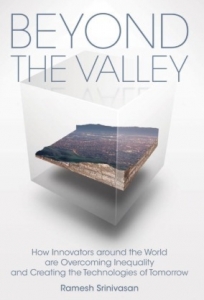
Our world and our financial products and services will be much better for it.
No matter your belief system about the benefits of technology, Ramesh Srinivasan’s thoughtful book Beyond the Valley: How Innovators around the World are Overcoming Inequality and Creating the Technologies of Tomorrow (published by The MIT Press) will change how you think about technology forever. I highly recommend it.

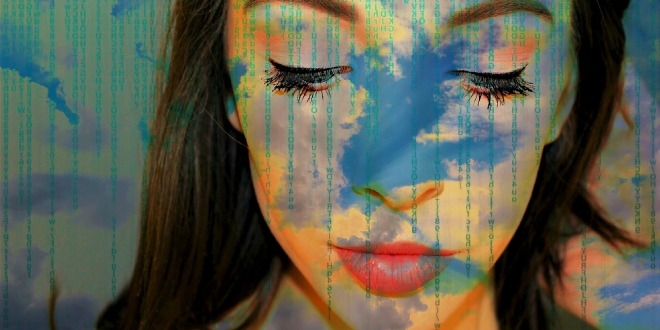






LET’S CONNECT